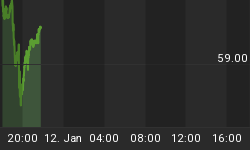For a few months now we've been hearing some voices in the investment and economic communities sound off about the Fed's decision to cease publishing M3 money supply figures. The publicly stated reason given by the Fed for ending the public release of M3 data was that it was a cost saving measure. Fine, but please excuse some of us who feel the move had far more to do with the fact that the ever growing money supply was starting to have increasingly obvious effects on prices and values throughout the world economy.
For those who believe that inflation is primarily a monetary event, often fueled by excessive money and credit creation, the figures regarding the broader measure of money supply growth reveal an undeniably large pool of liquidity sloshing through the system. This seems to be the pattern lately throughout the world, as money supply figures have increased at notable rates (often well above national GDP growth) in nations across the globe.
Asset prices have been buoyant in many of these economies during the past few years. After the post-2000 bust in American stocks, and the ensuing retrenchment of 2001-2002, a new wave of liquidity (brought about, in part, by a pronounced lowering of interest rates) flooded the nation's economy and found its way into a new asset class: real estate. This phenomenon was not limited to America; it has been observed in the other English speaking nations of England and Australia and in many other nations besides. Building booms in Dubai and Shanghai reveal the extent to which money is rapidly being put to work in some of the superheated economies. While the Chinese work to convert their dollar denominated holdings into tangible commodities and a secured share of energy resources, stock markets have boomed in the Middle East due to a flood of new money and a post 9/11 repatriation of funds held abroad.
All this speaks to the trend of global liquidity finding its way to commodity and asset prices, rather than the usual result of increased goods prices, a theme that is discussed in Marc Faber's book "Tomorrow's Gold". While a huge shift to manufacturing in low cost nations such as China and Vietnam has held down prices of manufactured goods, prices for assets, energy, and a broad array of services have gone kiting upwards. Increased demand can surely be a contributing factor in some areas of prices increases, as in the case of energy, but there also seems to be more going on. Companies are raising prices on goods in the hope of staying one step ahead of rising input costs and the effects of inflation on their bottom line. Investors increasingly flock to precious metals in hope of finding a store of value, and buyers of art in London, New York and Russia seem to be looking to do the same with their purchases. Meanwhile, demand for investments stays strong despite high market valuations and the questionable benefits of purchasing long term bonds at prevailing interest rates.
All this comes back to money supply and our ability to discern, through available data, how the levels of money existing in the economy are growing in relation to the demand for it. If excessive amounts of money and credit are continually pumped into the economy, the sure result will be an increasing level of inflation and malinvestment, leading to longer term disruptions that will negatively affect our standard of living, our freedom, and our faith in free markets.
As Congressman Ron Paul questions the claims of transparency said to be a hallmark of the new Fed Chairman's administration, some of us are left to wonder: does the announced disappearance of M3 matter? The shuffling, renaming and reintroducing of figures has occurred in the past and will likely continue into the future. Perhaps the mass of Fed watchers and economists will be weaned on a new, "improved" number, much in the way that we have been overtaken by a new and improved gauge of inflation (the much loved, "Core" CPI). But maybe this series of events will help push economic reporting back into the private realm, where politically disinterested economists attempt to assemble and report the numbers on their own.
















